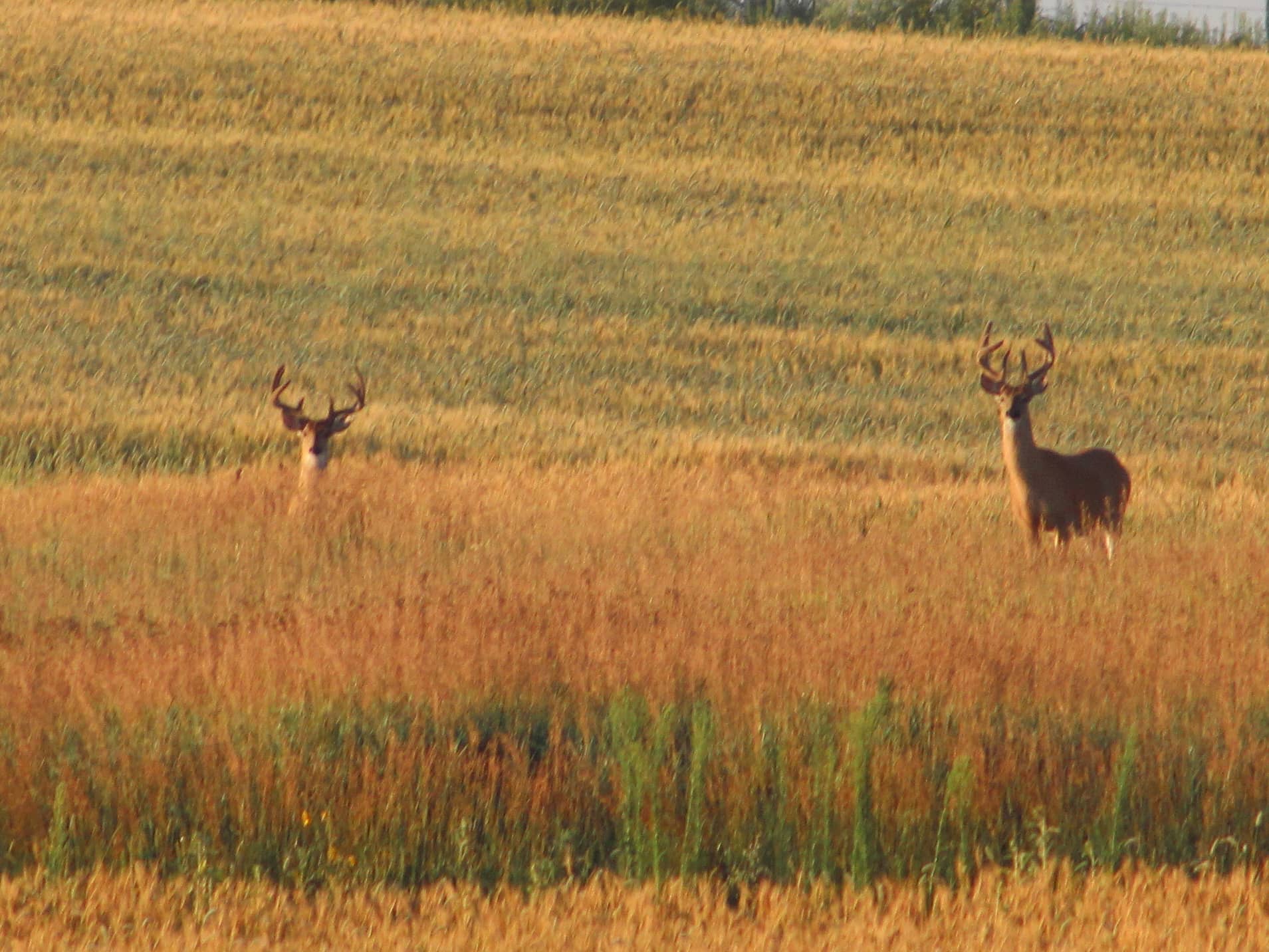
Deer that find areas that got a timely shot of rain in the northwest portion of North Dakota are likely to have better cover and forage. Most of the badland reaches, however, remain dry. Simonson Photo.
By Nick Simonson
A strong, snow-filled winter not only challenged deer in the northeastern corner of the state, but also hindered survey tactics employed by the North Dakota Game & Fish Department at the start of the year.
Unable to fly any aerial surveys, the department leaned heavily on the reports of staff, landowners and the general public, along with hunter surveys from 2019 to set the tone and the tag numbers for the 2020 firearms deer season. Despite not flying the annual surveys, the department isn’t flying blind, however, and utilized a number of other reports to assess license numbers for this year’s rifle season.
Heavy snow hit the landscape from Devils Lake to Drayton in early December, and continuous rounds of harsh weather came regularly through mid-March, keeping average depths on the landscape above 20 inches in some stretches for weeks at a time. With similar wet conditions in the fall, however, standing corn likely helped provide a food source for those populations of deer in the agricultural stretches of the northwest. Outside of the Red River Valley, the region boasts pretty good habitat, with more timbered areas than most regions of the state.
This, according to Jason Smith, NDG&F Big Game Biologist, is what likely helped the herd survive the snowy winter. However, the conditions were not ideal for surveying the region this year.
“Nothing was able to get done, the timing was bad; when we did have snow it was probably in that really, really cold spell, and it’s not the safest to be flying over some of that terrain,” Smith related of the harsh conditions for surveyors, and some of the more difficult-to-fly areas, such as the Pembina Gorge, adding “the stuff we fly in those units is the escarpment, so there’s a lot of challenges,” he concluded.
With the primary survey off the table, the agency turned to its people on the ground to get an idea of what they were seeing throughout the winter, and how the fall played out before things got dicey. Through the combination of 2019 rifle season hunter success and observation surveys, warden and biologist observations, and contact with landowners, the agency was able to set harvest goals and issue tags based on their management objectives with the information available.
“Observation numbers weren’t so bad, hunter success wasn’t too bad, from field staff their observations were that deer numbers were adequate,” said Big Game Biologist Bill Jensen, “if deer can get around and get to food, and there’s cover, they can do just fine,” he noted of northeastern whitetail populations over the winter of 2019-20.
Leaning on that information, the NDG&F increased firearm season tags around the region by 1,050 when compared to the 2019 rifle season. This number included 600 additional antlered any deer tags, from a bump of 200 each in units 2C, 2D and 2E. The number of antlerless deer tags in unit 2C doubled from 300 in 2019 to 600 in 2020, by far the biggest jump for tags in any category throughout North Dakota from last year to this year.
In those units where hunters will see increased tags, they’ll also find unique hunting opportunities, as the more timbered and rugged stretches of the Pembina Gorge and surrounding spaces provide an almost Northwoods feel to hunting efforts. With more timbered tracts and a good deal of public land to hunt, but with that change in the landscape often comes a changed methodology in pursuing wary timber bucks.
“The deer probably aren’t as visible as they would be out on the open areas of the prairie,” Smith states, “you’ve got to have a little bit of understanding of what the animal’s behavior is when it comes to hunting those timbered areas,” he advises, suggesting hunters put their time in to understand travel patterns and habits of whitetails in these limited forest areas of the northwestern corner.
In last season’s Chronic Wasting Disease sampling of the eastern third of the state, no positive animals were detected by the NDG&F in the northeastern region. This year, the rolling survey moves to the central third of the state.
With a clean bill of health for the region’s deer herd and more opportunities on the table for hunters in 2020 based on available information to the NDG&F, it is likely the northeast will see a very good fall for hunting, despite a tougher-than-average winter.
